Explore the stunning Antelope Canyon independently with self-guided tours, offering flexibility and a unique experience. Discover its breathtaking formations at your own pace, capturing unforgettable moments.
Overview of Antelope Canyon
Antelope Canyon, located on Navajo land in Arizona, is a breathtaking natural wonder renowned for its stunning slot canyon formations. It is divided into two main sections: Upper and Lower Antelope Canyon. The canyon is famous for its unique sandstone walls, carved by centuries of erosion, and its mesmerizing light beams that illuminate the interior during peak hours. A popular destination for photographers and outdoor enthusiasts, Antelope Canyon offers an unforgettable experience. Due to its location on Navajo land, all visits require authorized tours, ensuring preservation and safety; Its beauty and geological significance make it a must-visit for anyone exploring the American Southwest.
Importance of Self-Guided Tours
Self-guided tours offer a unique way to explore Antelope Canyon, providing flexibility and personal pacing. While traditional guided tours are required for land-based visits, self-guided options like kayaking or paddleboarding from Lake Powell allow independence. These tours enable visitors to connect deeply with nature, avoiding crowds and immersing themselves in the canyon’s serene beauty. They also provide ample time for photography, letting enthusiasts capture stunning images without rushing. However, it’s important to note that self-guided exploration on land is restricted, making water-based options a creative alternative for those seeking autonomy. These tours emphasize adventure and self-discovery, offering a memorable experience in one of Arizona’s most iconic natural wonders.
Understanding Antelope Canyon
Antelope Canyon, located on Navajo land in Arizona, is renowned for its stunning sandstone formations and light beams. A must-visit for photographers and nature enthusiasts alike.
Upper Antelope Canyon
Upper Antelope Canyon, known as “The Crack,” is a popular destination for its breathtaking light beams and stunning sandstone formations. Its wide entrance and relatively flat terrain make it more accessible compared to the Lower Canyon. Visitors often prefer Upper Antelope Canyon for its dramatic lighting, which creates iconic photo opportunities, especially during midday when sunlight illuminates the canyon floor. The canyon’s unique shapes and vibrant colors captivate photographers and adventurers alike, making it a must-visit location in Arizona. Guided tours are typically shorter and easier, offering a memorable experience for all skill levels.
Lower Antelope Canyon
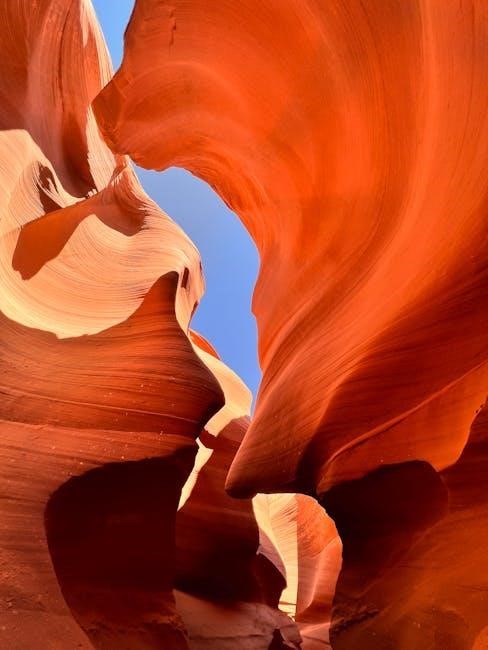
Lower Antelope Canyon, often called “The Corkscrew,” offers a more adventurous experience with its narrow passages and spiral rock formations. Unlike the Upper Canyon, it requires navigating steep staircases and ladders, making it less accessible for some visitors. The canyon’s unique shapes and twisting walls create dramatic visuals, especially in the morning or late afternoon when light filters through the cracks. While it is more physically demanding, the breathtaking scenery and quieter atmosphere make it a favorite among photographers and explorers. Visitors must be prepared for a moderate hike and should wear sturdy shoes to tackle the rugged terrain effectively.
Key Differences Between Upper and Lower Canyons
The Upper and Lower Antelope Canyons differ significantly in accessibility and scenery. Upper Antelope Canyon is wider, with smoother terrain and iconic light beams, making it ideal for photographers. It requires a shorter walk and is more accessible for all visitors. Lower Antelope Canyon, known as “The Corkscrew,” is narrower with spiral-shaped walls and deeper passages. It involves navigating staircases and ladders, making it more challenging physically. Upper Canyon tours are typically more expensive due to its popularity and photogenic qualities, while Lower Canyon offers a quieter, more adventurous experience. Both canyons provide unique landscapes, catering to different preferences and physical abilities, ensuring a memorable exploration for all who visit.
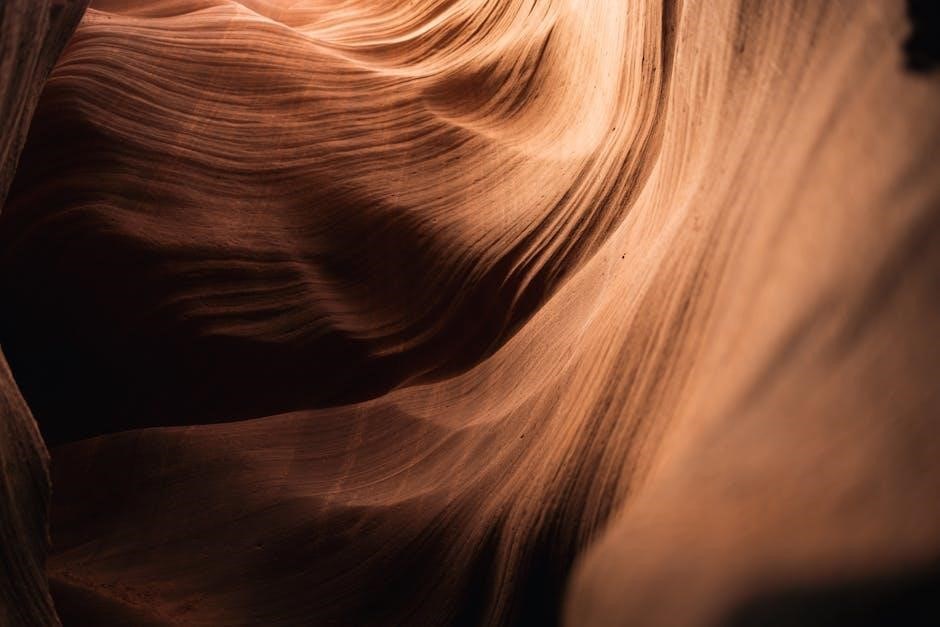
Planning Your Self-Guided Tour
Plan meticulously by checking access rules, obtaining permits, and preparing essentials like sturdy footwear and water. Ensure a smooth, enjoyable experience exploring Antelope Canyon’s natural wonders.
Best Time to Visit Antelope Canyon
The best time to visit Antelope Canyon is during the spring and fall seasons when temperatures are mild, making exploration more comfortable. Peak tourist season runs from April to October, with summer months offering the most dramatic light beams in Upper Antelope Canyon, typically visible at noon. Visiting in November or March can provide fewer crowds and a more serene experience. Avoid visiting during extreme summer heat or winter storms, as accessibility may be limited. Plan your trip according to your preference for photography or solitude, ensuring a memorable adventure through this natural wonder.
- Peak season: April–October
- Best for photography: Spring and fall
- Light beams: Most vivid at noon in Upper Canyon
Necessary Permits and Requirements
Visiting Antelope Canyon requires a Navajo National Park pass, mandatory for all tours, including self-guided options. Ensure you purchase permits in advance, as availability is limited. Additional fees may apply for specific access or photography privileges. Check with authorized tour operators for up-to-date requirements and costs. Follow all safety guidelines and regulations to preserve the canyon’s natural beauty for future visitors.
- Navajo National Park pass is mandatory
- Purchase permits in advance
- Additional fees for photography or special access
- Follow safety and preservation guidelines
What to Bring for a Self-Guided Tour
For a successful self-guided tour of Antelope Canyon, pack essentials like sturdy hiking shoes, water, and sun protection. Bring a reliable camera and extra batteries for capturing stunning images. A flashlight or headlamp is useful for navigating darker areas, and a small backpack can carry snacks and other supplies. Be prepared for varying weather conditions by dressing in layers. Lastly, ensure you have all necessary permits and a map or guide to navigate the canyon efficiently.
- Sturdy hiking shoes
- Water and snacks
- Sunscreen, hat, and sunglasses
- Camera and extra batteries
- Flashlight or headlamp
- Small backpack
- Permits and navigation materials
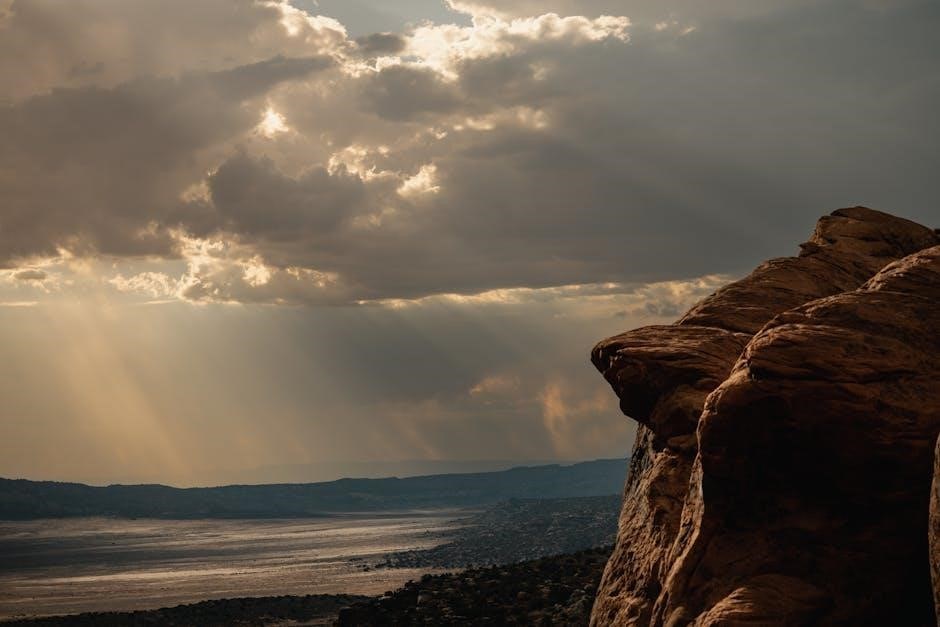
Navigating the Canyon
Navigating Antelope Canyon requires careful planning and knowledge of the terrain. Use maps and guides to explore safely, ensuring you respect the land and its regulations.
Self-Guided Tour Options
Self-guided tours of Antelope Canyon offer flexibility and independence. Kayaking or paddleboarding from Lake Powell allows exploration at your own pace. Wire Pass provides a self-guided slot canyon experience nearby. For those seeking adventure, hiking through the canyon’s trails is an option. However, note that permits and Navajo passes are still required. Ensure you research the terrain and difficulty level to choose the best route for your skills. Bring necessary gear, including water, snacks, and a map, to navigate safely. Respect the land and its regulations to preserve this natural wonder for future visitors.
Challenges of Navigating Without a Guide
Navigating Antelope Canyon without a guide presents unique challenges. The canyon’s complex terrain and narrow passages require careful navigation. Without a guide, visitors must rely on their own knowledge of the trail, which can be disorienting. Additionally, the lack of expert insights means missing out on historical and geological context. Physical challenges include climbing ladders and navigating uneven surfaces, which can be daunting for some. Weather conditions like flash floods and extreme heat also pose risks. Self-guided explorers must be well-prepared and informed to ensure a safe and enjoyable experience. Proper planning and awareness are crucial to overcoming these challenges.
Safety Tips for Exploring the Canyon
Safety Tips for Exploring the Canyon
Ensuring safety is paramount when exploring Antelope Canyon. Always stay alert to your surroundings and watch for potential hazards like loose rocks or slippery surfaces. Wear sturdy shoes and appropriate clothing for the terrain. Carry sufficient water and snacks, especially during hot weather. Be mindful of weather conditions, as flash floods can occur suddenly. Keep a charged phone for emergencies and consider carrying a first-aid kit. Respect the canyon’s fragile environment by staying on designated paths and avoiding sensitive formations. Never venture into the canyon without proper permits, and be aware of time constraints to avoid getting lost or stranded. Prioritize caution and preparedness to ensure a safe and enjoyable exploration of this natural wonder.
Photography in Antelope Canyon offers stunning opportunities to capture unique light shafts and vibrant colors. Visit during midday for optimal lighting and bring a tripod for stability.
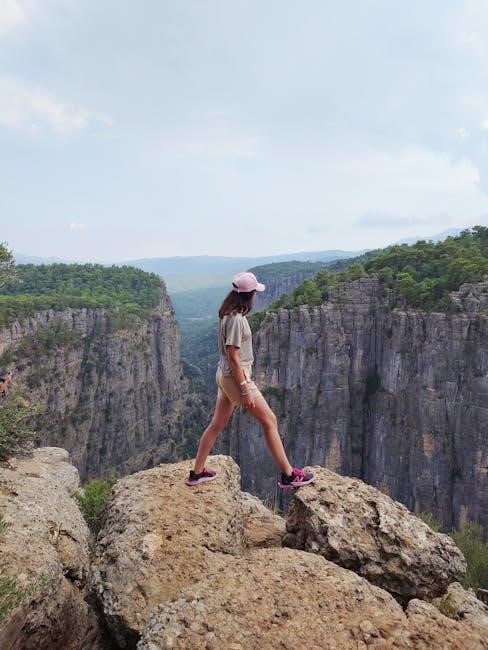
Best Times for Photography
For photography in Antelope Canyon, the best times are during midday when sunlight filters through the canyon, creating stunning light beams. Visit between 11 AM and 1 PM for optimal conditions. The upper canyon offers better-lit areas, while the lower canyon provides unique shadow play. Spring and fall seasons boast clearer skies, enhancing photo quality. Summer months are peak tourist times, so expect crowds. Winter offers softer light with fewer visitors. Bring a tripod for stability and a wide-angle lens to capture the vastness. Be prepared for changing light conditions and adjust settings to avoid overexposure from the intense midday sun.
Essential Photography Equipment
For capturing stunning images in Antelope Canyon, essential photography equipment includes a DSLR or mirrorless camera with manual controls, a wide-angle lens (10-22mm) to frame the vastness, and a tripod for stability in low-light conditions. A polarizing filter reduces glare and enhances colors. Extra memory cards and batteries are crucial, as options for replenishing supplies may be limited. Consider a neutral density (ND) filter to manage harsh sunlight and prevent overexposure. A backup camera or smartphone ensures you don’t miss shots if your primary device fails. Bring a cleaning kit to remove dust and fingerprints. These tools will help you make the most of the canyon’s unique lighting and formations.
Tips for Capturing Stunning Images
To capture the breathtaking beauty of Antelope Canyon, focus on lighting and timing. Visit during the golden hour or when sunlight beams illuminate the canyon for dramatic effects. Use a tripod to stabilize your camera in low-light conditions and experiment with long exposures to enhance colors. Shoot in RAW format to retain image detail for post-processing. Look for unique compositions, such as leading lines formed by the canyon’s curves or symmetrical patterns in the rock formations. Avoid over-editing to maintain the natural essence of the scene. Take your time to observe and wait for the perfect moment to click, ensuring your photos reflect the canyon’s serene and awe-inspiring atmosphere.
Alternative Ways to Explore Antelope Canyon
Discover Antelope Canyon through kayaking or paddleboarding from Lake Powell, offering a serene water-based perspective. Wire Pass and nearby slot canyons provide additional adventurous self-guided exploration opportunities.
Kayaking or Paddleboarding from Lake Powell
Kayaking or paddleboarding from Lake Powell offers a unique and serene way to explore Antelope Canyon. This self-guided adventure allows you to glide through calm waters and access the canyon’s entrance. Bring a kayak or paddleboard, along with a valid permit, to navigate the tranquil surroundings. The peaceful atmosphere provides an opportunity to connect with nature while enjoying stunning views of the canyon’s iconic sandstone walls. This method is ideal for those seeking solitude and flexibility, as it avoids the crowds associated with traditional tours. Ensure you’re prepared with proper equipment and safety gear for a safe and enjoyable experience.
Wire Pass: A Self-Guided Slot Canyon Option
Wire Pass offers a self-guided slot canyon experience near Page, Arizona, making it an excellent alternative to Antelope Canyon. This lesser-known canyon provides a serene and crowd-free environment, allowing visitors to explore at their own pace. The trail begins with a short hike through a scenic wash before narrowing into a stunning slot canyon. Wire Pass features unique rock formations and vibrant colors, offering plenty of opportunities for photography. While it doesn’t require a guide, a small entrance fee applies. It’s an ideal choice for those seeking solitude and adventure, with its natural beauty rivaling that of Antelope Canyon. Bring water, a hat, and sturdy shoes for a memorable journey through this hidden gem.
Visiting Nearby Slot Canyons
Exploring nearby slot canyons is a great way to enhance your Antelope Canyon experience. Canyons like Horseshoe Bend, Cathedral Canyon, and Secret Canyon offer stunning landscapes and unique formations. These destinations provide opportunities for solitude and unguided exploration, allowing you to connect with nature at your own pace. Many are accessible with minimal permits or fees, making them ideal for self-guided adventures. Each canyon boasts its own charm, from narrow passageways to dramatic lighting, offering photographers and adventurers alike unforgettable moments. Visiting these nearby wonders complements your Antelope Canyon journey, giving you a broader appreciation for the region’s natural beauty and geological marvels. Plan your itinerary to include these hidden gems for a truly immersive experience.
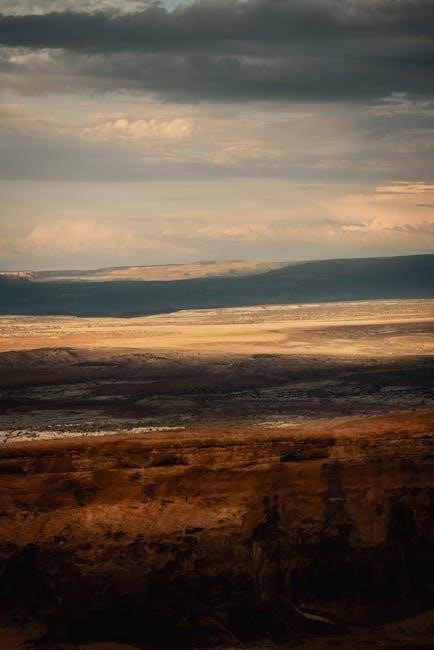
Cost Considerations

Self-guided tours are not permitted; guided tours range from $40 to $80, with additional fees for permits and nearby attractions like Wire Pass.
Prices for Self-Guided Tours
Self-guided tours are not permitted at Antelope Canyon, as all visits require authorized guides. However, prices for standard guided tours range from $40 to $80 per person, depending on the duration and type of tour. Deluxe options may include additional amenities like photography assistance or smaller group sizes. These costs typically cover the Navajo permit fee, which is mandatory for entry. Prices may vary slightly between tour operators, so it’s worth comparing options. Additional fees might apply for equipment rentals or special access during peak times. Plan accordingly, as tours often sell out quickly during high season.
Additional Fees and Permits
When visiting Antelope Canyon, additional fees and permits are necessary to ensure access. A Navajo National Park pass is required for entry, typically included in the cost of guided tours. Photography permits may incur extra charges, especially for professional-grade equipment. Some tours offer deluxe packages that include these fees upfront. Self-guided tours are not permitted, so all visits must be arranged through authorized operators. Be prepared for potential additional costs for equipment rentals or special access during peak times. Plan ahead to avoid surprises, as fees can vary depending on the tour operator and services included. Always confirm what’s covered in your tour package to budget accordingly.
Comparing Costs with Guided Tours
Self-guided tours of Antelope Canyon are not permitted, as access requires authorized tours. Guided tours typically range from $40 to $80 per person, depending on the type and duration. Deluxe options may include additional amenities. Photography tours often cost more due to specialized access and permits. While self-guided options are unavailable, nearby attractions like Wire Pass offer self-guided experiences for a smaller fee. Comparing costs, guided tours provide structured experiences with knowledgeable guides, making them worth the investment for many visitors. Always check what’s included in the tour price to ensure it aligns with your preferences and budget. Plan accordingly to make the most of your visit to this iconic location.
Visitor Reviews and Testimonials
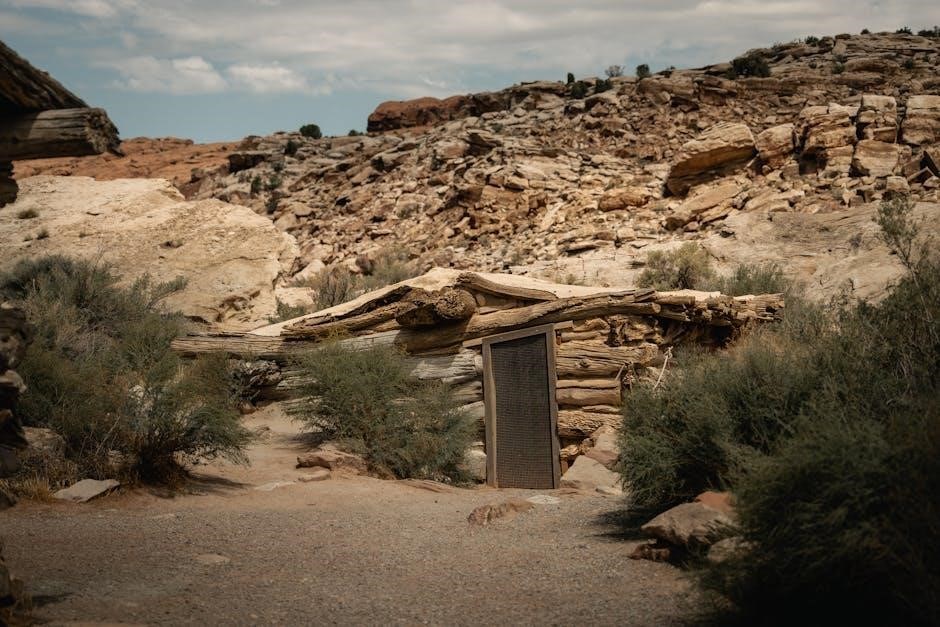
Visitors praise Antelope Canyon’s breathtaking beauty and knowledgeable guides, highlighting unforgettable experiences. Many recommend guided tours for their insights and safety, ensuring a memorable adventure in this natural wonder.
Experiences with Self-Guided Tours
Visitors who opt for self-guided tours of Antelope Canyon often describe the experience as liberating and immersive. Exploring at their own pace allows for a deeper connection with the canyon’s natural beauty. Many appreciate the freedom to linger at favorite formations or take uninterrupted photos. However, some note that navigating without a guide requires careful planning and attention to safety. Kayaking or paddleboarding from Lake Powell is a popular self-guided option, offering a unique perspective. Others highlight the thrill of discovering hidden gems independently. Overall, self-guided tours provide an adventurous and memorable way to experience Antelope Canyon’s stunning landscapes.
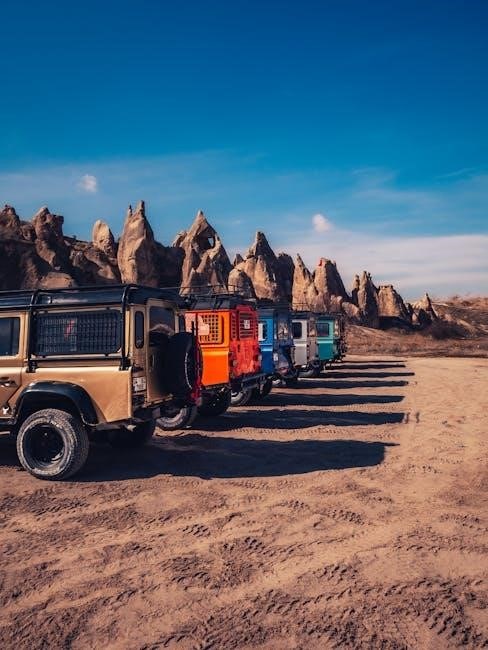
Feedback on Navigation and Safety
Visitors who have embarked on self-guided tours of Antelope Canyon often highlight the importance of proper preparation and awareness. Navigating the canyon without a guide can be challenging, especially for those unfamiliar with the terrain. Many emphasize the need for sturdy footwear, as the stairs and ladders in Lower Antelope Canyon can be demanding. Safety is a top concern, with visitors advising others to stay alert and avoid risky behavior. Additionally, the lack of signage in some areas requires careful attention to avoid getting lost. Overall, while self-guided tours offer freedom, they also demand responsibility and caution to ensure a safe and enjoyable experience.
Recommended Tips from Previous Visitors
Previous visitors highly recommend planning ahead and being prepared for your self-guided tour of Antelope Canyon. Wear sturdy footwear, as the terrain can be uneven and challenging, especially in Lower Antelope Canyon with its ladders and stairs. Bring essentials like water, snacks, and extra batteries for your camera. Many suggest visiting during off-peak times to avoid crowds and enjoy a more peaceful experience. Respecting the canyon’s natural beauty and Navajo land rules is crucial. Visitors also advise staying alert and cautious while navigating, as the canyon’s narrow passages and lack of signage can be disorienting. Lastly, bring a map or GPS device to ensure you stay on track and avoid getting lost. These tips will help you make the most of your adventure while staying safe and responsible.
